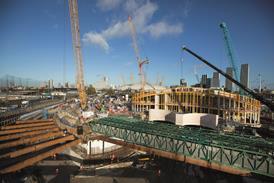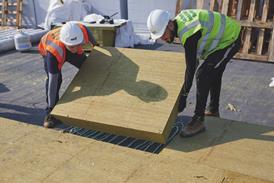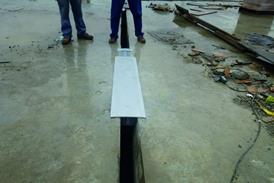- News
Regulations latest
All the latest updates on building safety reform
- Focus
- Comment
- Data
- Programmes
- CPD
- Events
- Jobs
- Subscribe
- Building Boardroom
Does the latest RAAC research mean remediation could be easier and cheaper than all the panic suggests?

A Loughborough University expert has identified the primary cause of failure – and suggests RAAC has the potential to be safe if properly managed
Judging from the news headlines and warnings from experts, knowingly entering a building constructed from reinforced autoclaved aerated concrete is akin to an act of suicide.
John Roberts, a former president of the Institution of Structural Engineers recently said he never trusted RAAC, describing it as an inherently risky material that was mis-sold by manufacturers. Last September the Office for Government Property issued a statement warning that RAAC is life-expired and liable to collapse. And in 2019 the Standing Committee on Structural Safety (SCOSS), with the HSE, IStructE and ICE, issued an alert warning that pre-1980’s RAAC planks had an expected service life of 30 years and should be replaced.
Chris Gorse, the professor of construction management and engineering at Loughborough University, is surprised by the idea that RAAC is inherently dangerous with a limited life. “We have found RAAC that is 40 to 50 years old and has suffered carbonation so the reinforcement is corroded and delaminating in some places, and it is variously cracked and in such a state of disrepair that you would think it is a real risk. But it can still stay in place and sustain loads which is quite surprising.”
…
Already registered? Login here
To continue enjoying Building.co.uk, sign up for free guest access
Existing subscriber? LOGIN
Stay at the forefront of thought leadership with news and analysis from award-winning journalists. Enjoy company features, CEO interviews, architectural reviews, technical project know-how and the latest innovations.
- Limited access to building.co.uk
- Breaking industry news as it happens
- Breaking, daily and weekly e-newsletters
Get your free guest access SIGN UP TODAY

Subscribe now for unlimited access
Subscribe to Building today and you will benefit from:
- Unlimited access to all stories including expert analysis and comment from industry leaders
- Our league tables, cost models and economics data
- Our online archive of over 10,000 articles
- Building magazine digital editions
- Building magazine print editions
- Printed/digital supplements
Subscribe now for unlimited access.
View our subscription options and join our community



















